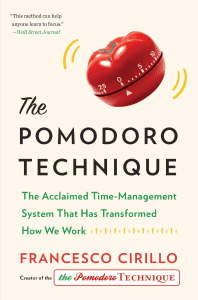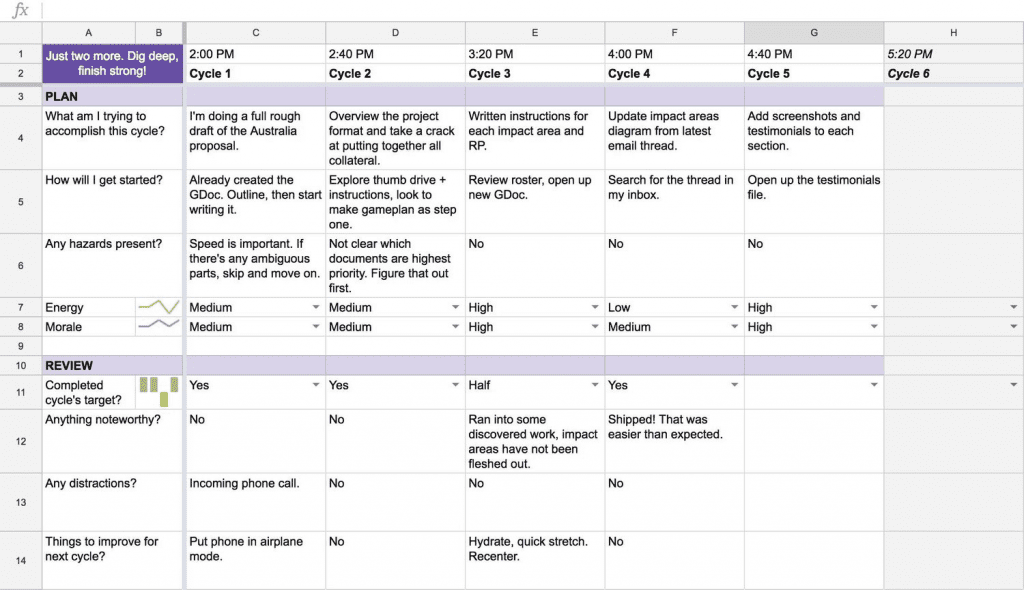
Pomodoros, Animedoros, Work-cycles, and Relays
Pomodoros

Pomodoros are a classic focus technique of which you may have already heard. Here is the website for the original, official idea. It is essentially time-boxing: doing one task for twenty-five minutes, taking a break for five, and repeating. After four sessions, you’re supposed to take a longer break.
Now, five minute breaks can be very short even for the most basic tea or loo break. So, some people use ‘twenty-tens’ instead. Twenty minutes’ work is just that little bit less intimidating than twenty-five, and ten minutes can give a proper feeling of a break. I think we first came across twenty-tens in the ‘Unfuck Your Habitat’ community, which is worth a look if you struggle with tidying and cleaning; they take a very compassionate and real-life approach to encouraging people to tackle the housework. I especially enjoy people posting their before-and-after photos, often with an uplifting message such as “And this only took one twenty-ten!”
You can adapt the pomodoro idea to any timings you want, and there are also lots of apps that provide excellent timers to structure the pomodoro for you, or people who have put themselves working through pomodoros in real-time on YouTube, with which you can follow along.
Anime-doros

A clever adaptation of the pomodoro is the anime-doro. This was proposed in a YouTube video by Josh Chen. The idea is that you do a chunk of work, no less than forty minutes’ worth but no more than an hour, stop when you get to a sensible point with your work, and then watch one twenty-minute episode of an anime or similar cartoon series. Thus, your breaks become a lot more rewarding and motivating to get to, and you get to actually relax for a few minutes before working again; you get more work done at a time without working to the point of losing focus completely; and you can probably sustain this pattern a lot longer than with typical pomodoros. However, the obvious pitfalls are to make sure that you don’t persuade yourself into watching a second episode in the same break, or stretch out the intervening time (when you fetch a drink or snack, for instance) around your break until it becomes much longer than the episode length itself.
When I tried to apply this approach myself, I spent a long time on Netflix trying to decide which cartoon series to watch, which should probably also be noted as a pitfall. When I tried it with Francis, however, it worked really well, and we got a lot of cleaning done.
Work-cycles

Yet another way to develop pomodoros is to use work-cycles. This is essentially a spreadsheet (you can download the template for free via Google Sheets) which you use to explicitly state what you’re aiming to get done in each pomodoro, and to track whether you achieved it afterwards. Asking these particular questions boosts the effectiveness of your pomodoros a lot, because no matter how defined you think your task is, until you’ve written down exactly what step you intend to take next you are probably glossing over something in your thought process. I find doing this can really help me keep moving through a tricky (or anxiety-provoking) coding problem at work until I have explored enough avenues that the way forward becomes clear.
Cleaning relays
This idea isn’t really pomodoro-inspired, but it seems to fit. Francis and I have started doing ‘relays’, where he will clean the kitchen for ten minutes, then I will, then he will, and so on. This seems to work well on a lot of levels: it’s scrupulously fair, you feel like a team, you don’t get in each other’s way, you get a boost from part of the work being done for you each time you approach the task again, and best of all, you get to only work for ten minutes at a time and then have another sit-down. Would recommend.







